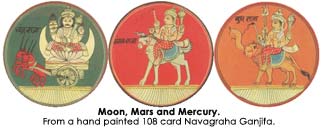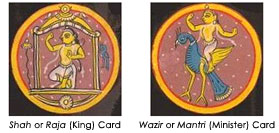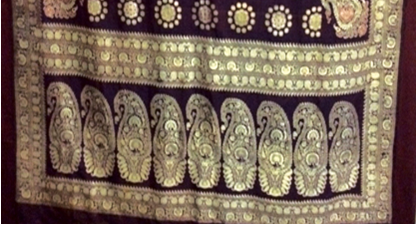Games are a common passion, a common pastime which cross all sections of the community. Playing or watching games form a highly significant aspect of culture, both because of their importance in peoples lives and their capacity to bring families and communities together and because of the degree of creativity and skill that go into devising them. No indoor games match the passion with which cards are played in India. One such card game, now facing extinction is Ganjifa.

HISTORY
The leading theory is that the Ganjifa pattern was created in Persia, most likely under the influence of playing cards from the East (probably money-suited decks), and introduced in India by the Mughals. The origin of the term Ganjifa is obscure. Ganj is a Persian term meaning 'treasure, treasury or hoard'.
The first mention of the game is made in the Babarnama, the memoir of Babar. The founder of the Mughal dynasty, Emperor Babur, who ruled from 1526 to 1530, reports in his annals, "This evening... Mir Ali Korchi was dispatched to Tatta [in Sindh] to Shah Hussain. He is fond of the game with cards and had requested some which I have duly sent him." The word used for cards in this text is Ganjifa or the Persian Ganjafeh.

The next, more detailed, reference is found in the Ain-I-Ak...
This is a preview. To access all the essays on the Global InCH Journal a modest subscription cost is being levied to cover costs of hosting, editing, peer reviewing etc. To subscribe, Click Here.




